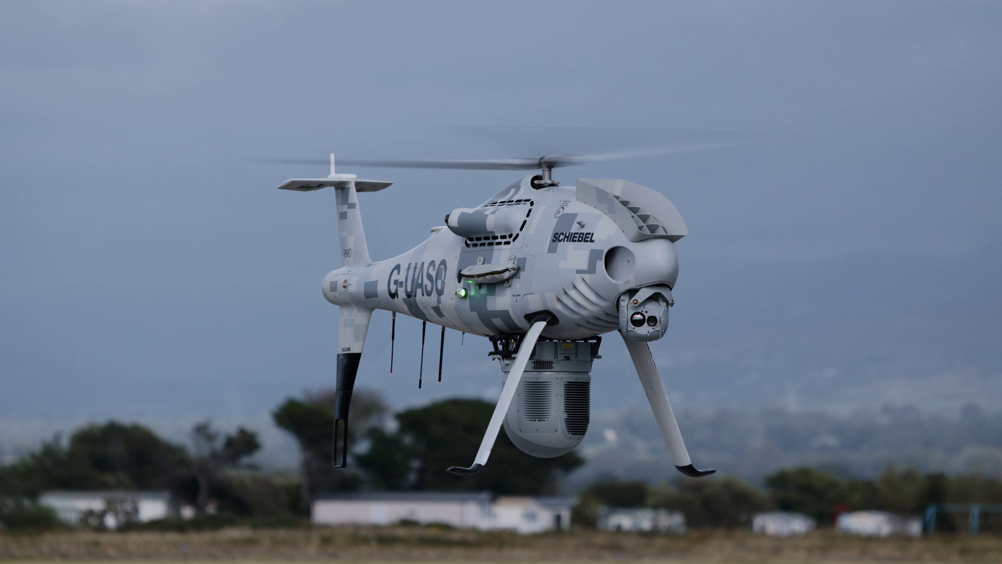Known as Peregrine, the Uncrewed Air System (UAS) is based on Schiebel’s Camcopter S-100 platform. Thales will act as the lead systems integrator, equipping the craft with a suite of naval sensor technology.
MORE ON DEFENCE & SECURITY
“We're contracted to deliver an operational capability to Royal Navy to put in place a VTOL (vertical takeoff and landing), uncrewed aircraft system equipped with a number of sensors,” Matt Moore, Thales UK head of Unmanned Air Systems Sales and Business Development, told The Engineer.
“Those sensors and data are then pulled back onto the ship and then pulled into the combat management system to give it that sort of maritime situation awareness...finding targets, fixing those targets and assessing them to give a valuable input to the command ship and the task force.”
The sensor suite will include an Automatic Identification System (AIS) combined with the CarteNav AIMS Mission System, which together will facilitate the rapid detection and identification of unknown targets. Peregrine will also feature Thales’ I-Master radar, which can be operated in both Synthetic Aperture Radar and Maritime Moving Target Indication modes.
“Once we get a bit closer we can then flip to the electro optical camera and that would give us a positive identification of what's going on,” said Moore.
High-definition imagery and radar data is then downloaded to the human operator, disseminated in real-time through the host ship’s Combat Management System and made available to multiple users.

Austrian firm Schiebel’s S-100 platform has been in operation for 15 years, with both military and commercial customers. It has a maximum takeoff weight of 200kg, with its standard 50kg fuel tank providing around six hours of endurance, though an auxiliary tank can extend that to 10 hours.
“We can carry a mixture of payloads and we’re very much a plug and play, depending on customer requirements,” explained Neil Hunter, director of Business Development at Schiebel.
“We can fly out to a maximum distance of 200 kilometres, but we tend to operate within 100 kilometres of the host platform. That tends to be the normal, which takes you well beyond the horizon of the platform, whether it's land or maritime based.”
Though Peregrine has been developed specifically with the Type 23 in mind, Thales and Schiebel both believe the platform has potential to feature across the wider Royal Navy fleet.
“There’s a big push to move from crewed to uncrewed technologies,” said Moore. “There's a particular requirement for Type 23 in an operational area that needs urgency, to extend the ‘eyes and ears’. But what I would say is the Navy have ambitions much bigger and they want to incorporate these types of technologies. So for us I think this is a first step.”












McMurtry Spéirling defies gravity using fan downforce
Ground effect fans were banned from competitive motorsport from the end of the 1978 season following the introduction of Gordon Murray's Brabham...